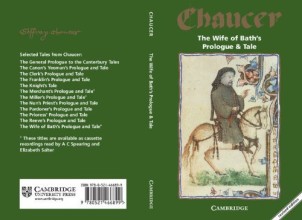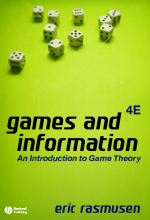Summary: The Wife Of Bath's Prologue & Tale From The Canterbury Tales | 9780521466899 | Geoffrey Chaucer, et al
- This + 400k other summaries
- A unique study and practice tool
- Never study anything twice again
- Get the grades you hope for
- 100% sure, 100% understanding
Read the summary and the most important questions on The wife of Bath's prologue & tale from the Canterbury tales | 9780521466899 | by Geoffrey Chaucer ; edited with introduction, notes, and glossary by James Winny ; revised by Sean Kane and Beverly Winny.
-
1 The Tale
This is a preview. There are 6 more flashcards available for chapter 1
Show more cards here -
No one other than Arthur is named, what does this say about the significance of the characters?
Their significance rests on the idea they represent, not in their individual lives/ personalities.
-
How is female domination over male presented in the tale? How do some people see this?
The hag + the queen and her female court i.e. the Knight is set off on a quest not on King Arthur's instigation but that of the queen = some see this as feminism in action before its time
-
How is the quest in WOB different from traditional chivalric quests?
Chivalric quests typically involve the acquisition of significant wisdom and increased honour through a display of endurance of hardship - although no honour is involved in the quest in the Wife of Bath, just the possibility of staying alive.
-
What can be said about the moral at the end of the tale?
Chaucer leaves the moral ambiguous - did the Knight deserve a young beautiful wife?
-
What imagery does the hag use to show that wealth does not indicate moral value? What does she say about those who are wealthy?
Tullius - low rank and rose to become King
Those who are wealthy are full of greed and corruption
-
What do critics argue that the tale's primary intention is?
To subvert our expectations of a traditional fairytale or courtly medieval romance.
-
What can be said about the hag's character?
The hag articulates the most rigorous intellectual processes and is more noble than the knight.
-
What can be said about the Knight's first encounter with the hag? Where did it take place?
He encounters the hag in desperation - the complete reverse encounter with the maiden. It takes place in a forest - often places of radical transformation.
-
How long is the 'gentillesse' lecture? What would the modern and medieval audiences think of this?
It covers 1/4 of the tale = a little excessive for the modern reader - Medieval audiences expected a moral to their stories.
-
Romances often end with a reference to God, what can be said about the WOB's reference?
She uses "Jhesu" and "God" as agents of her desire (she asks Jesus to cut her husband's lives short = amusingly frank) + the misuse of the word "grace" - her hopes expressed are articulated in unchristian terms.
- Higher grades + faster learning
- Never study anything twice
- 100% sure, 100% understanding

































